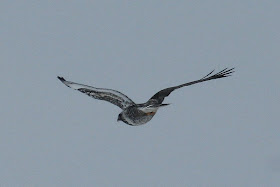 |
| “A Gaggle of Geese” describes the goose tendency to “talk” constantly with one another when in flight. |
I read this and I thought - Well, okay, maybe I’m not the bonafide birder I thought I was, because most of these terms were only vaguely familiar to me.
However, there are other phrases for numbers of birds with which I have long been familiar: a kettle of hawks, a gaggle of geese, a raft of ducks.
Where these familiar phrases (familiar to me) came from was not difficult to figure out. “A kettle of hawks” describes hawks rising on warm thermals, much as bubbles might rise to the surface in a boiling kettle of water. “Gaggle” is what a bunch of geese sound like. A large number of ducks riding the ocean waves look like a rudderless raft rising and falling. A “raft” can also refer to a large collection of something, such as a large collection of ducks.
 |
| "A Murder of Crows" |
Parliament is a gathering for talk and discussion. I remember one summer evening on Sunset Lake listening to a “parliament” of Barred Owls conversing back and forth. And the voice of the dove is often mournful (Mourning Dove) and plaintive - hence “a pitying of turtle-doves.”
My curiosity peaked, I did some further research. There are a few terms that can be applied to many different groups of birds: colony, company, flock, parliament, party. There are other group terms that are standard and likely recognizable to many people, even non-birders: a bevy of quail, a bouquet of pheasants, a covey of partridges (or grouse or quail), a skein of geese.
There are terms which use to be used, but are hardly ever heard anymore: a congregation of plovers, a dole of doves, a paddling of ducks. My source suggested that “a host of sparrows” falls into this category, but I find myself using “host” for sparrows and many other species. That same source also cites “a fall of woodcock” as an obsolete term. Come Spring, I will begin a revival of “a fall of woodcock,” for that is an apt description of how the woodcock’s display flight concludes - after circling and twittering overhead, he suddenly drops, or falls, out of the night sky as he returns to his dance floor.
Many of these terms are listed in James Lipton's An Exaltation of Larks (1991), which is based on old sources. The terms evolved during the Middle Ages when the sophisticated art of hunting demanded an equally sophisticated vocabulary. In addition to a passion for sport, the nobles also delighted in the play of words. There were manuscript lists of group names in the 15th century, and these lists appeared in some of the first books printed in England.
 |
| “A Kettle of Hawks” - Broad-winged Hawks circle on rising thermals over Putney Mountain. |
 |
| “A Stew of Oystercatchers” may have been coined by birders peering too long through their binoculars |
So, what do we make of all of this? Not much. If you want to refer to those geese you saw as a bunch, rather than a gaggle, that’s okay. If you like pointing toward those hawks that are “flying in a big circle” rather than kettling, who am I to complain? But as far as I’m concerned those hundred big black birds rising out of their rousting pines are going to be “a murder of crows,” because at the very least, they can make a murderous noise when they want.
 |
| "A Raft of Ducks" |
Good birding!































